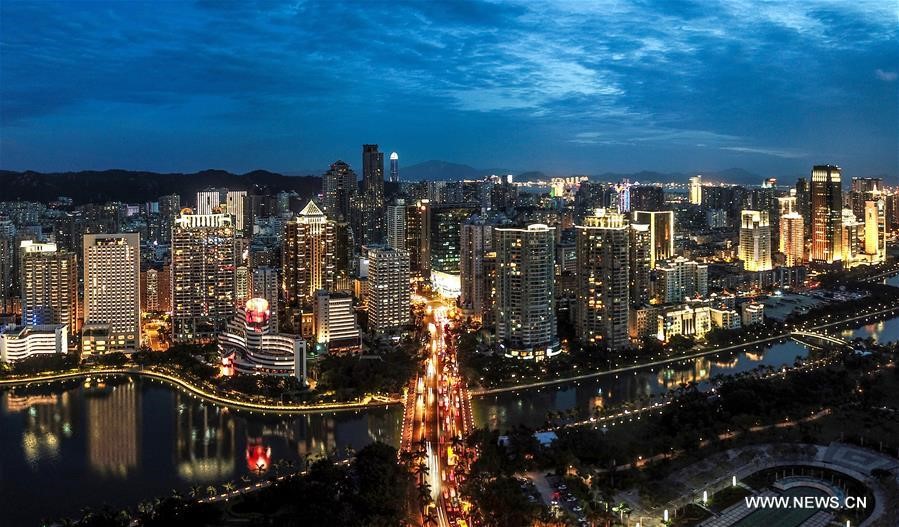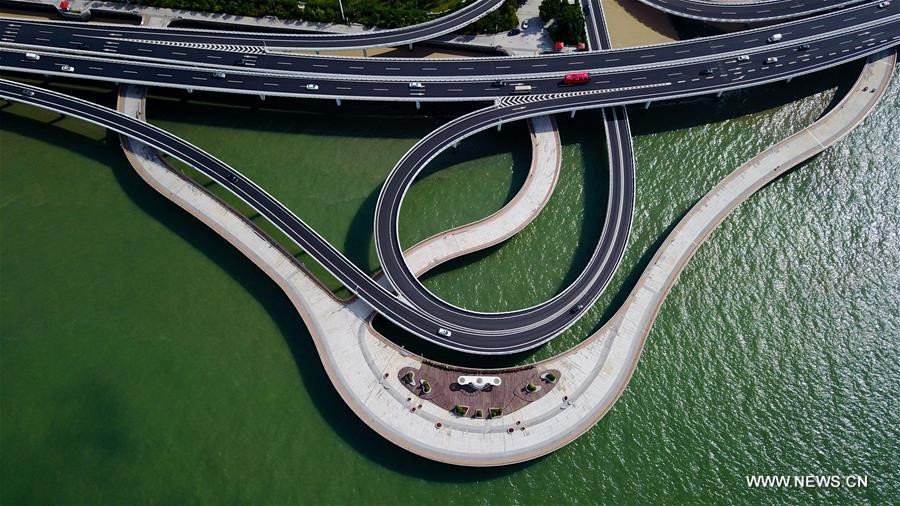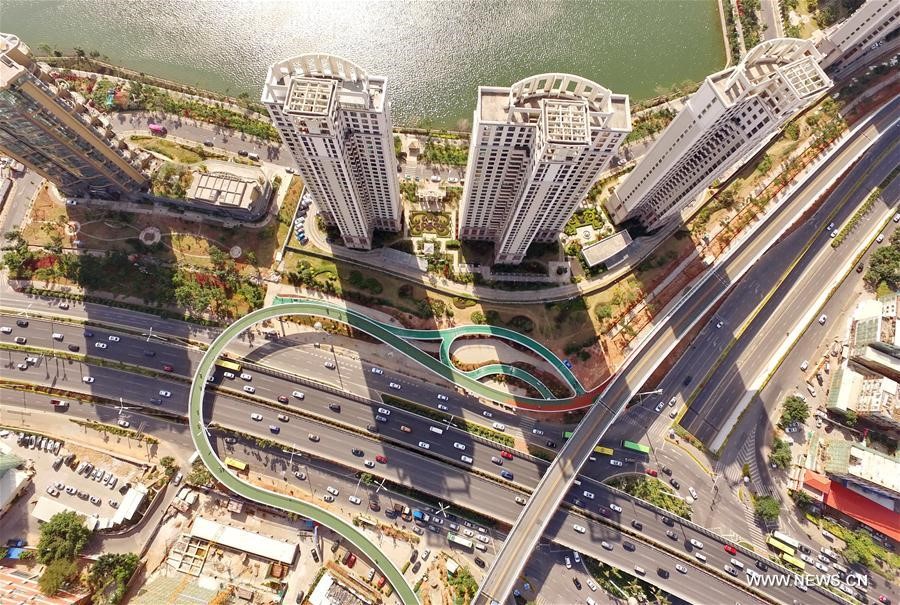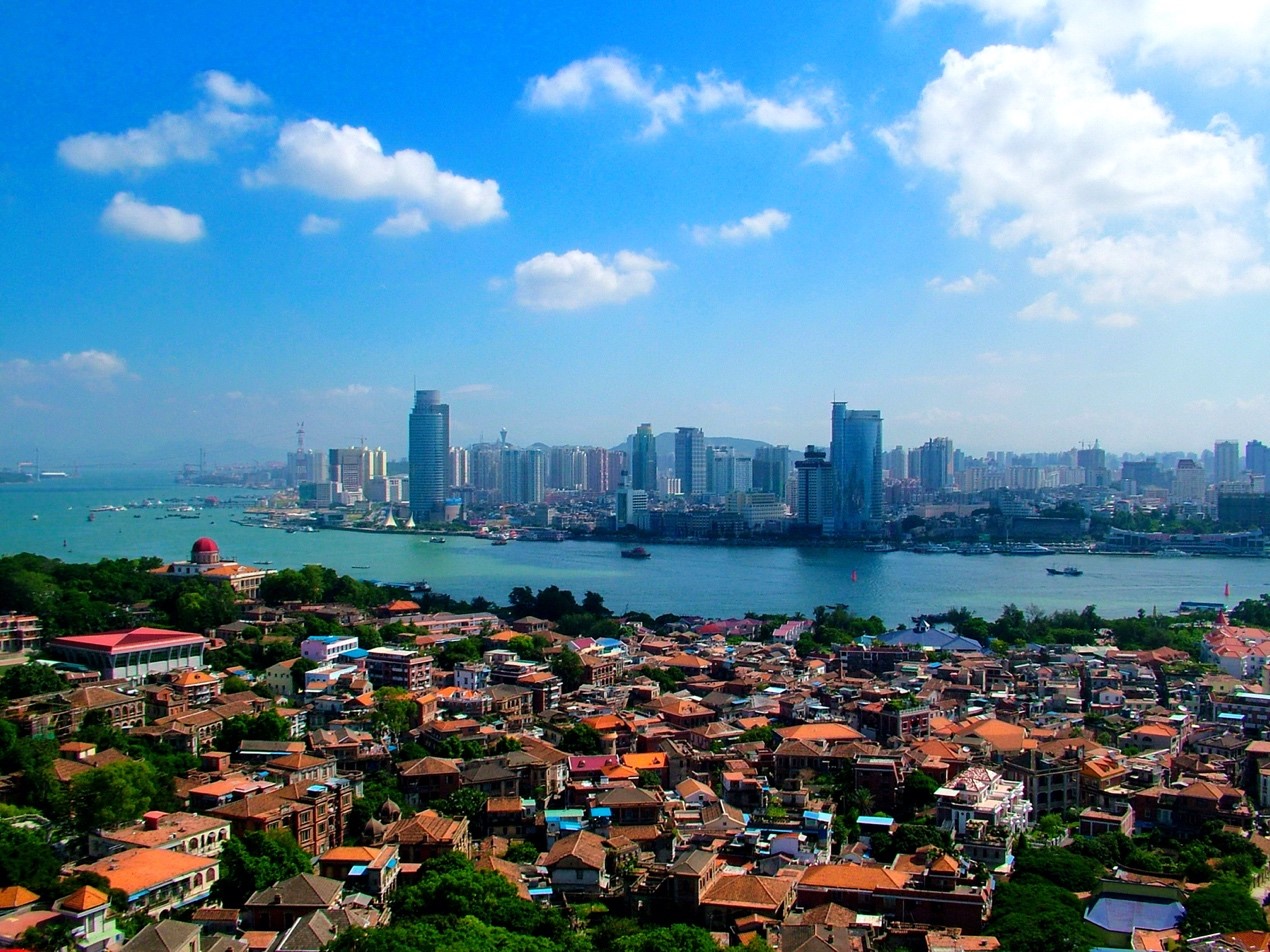40 Years of Development: Xiamen Special Economic Zone

Aerial photo taken on Aug. 24, 2017 shows the night scenery of Xiamen, southeast China’s Fujian Province. (Source: Xinhua)
Xiamen, a coastal city in southeast China’s Fujian Province, is home to one of the first four Special Economic Zones in China that has always been at the forefront of China’s reform and opening up since its establishment.
Xiamen Special Economic Zone, established in October 1980, originally covered an area of 2.5 square kilometers in Huli District. In 1984, it was expanded to 131 square kilometers, covering the entire Xiamen Island.
40 years has passed, tremendous changes have taken place in Xiamen, as the city has substantially upgraded its infrastructure, integrated cultural tourism industries, improved social living conditions, and boosted local economy.
“First-of-its-kind” Infrastructure Projects

Aerial photo taken on Aug. 24, 2017 shows Yanwu Bridge in Xiamen, southeast China’s Fujian Province. (Source: Xinhua)
Xiamen has completed and upgraded transport infrastructure projects, many of which were the first of their kind in China.
In October 1987, Xiamen started a cross-sea bridge project to link Huli District in Xiamen Island and Jimei District in the city’s northwestern part. After four years of construction, Xiamen Bridge was opened to public traffic on December 19, 1991. With a total length of 2,070 meters and a daily traffic flow of 25,000 vehicles, it became the first and longest cross-sea bridge in China at that time.
A series of bridge projects had been completed since then. Haicang Bridge was opened to public traffic in 1999, Yanwu Bridge opened in 2003, Jimei Bridge in 2008, and Xinglin Bridge in 2010.
To further facilitate traffic within the city, Xiamen also built the first undersea tunnel in Chinese mainland. Xiamen Xiang’an Tunnel, connecting Wutong on Xiamen Island and Xiang’an, the easternmost district of the city, was run-through in November 2009, after more than four years of construction. It’s 8.695 kilometers in length with an undersea section of 6.05 kilometers. The deepest part of the tunnel is 70 meters below the sea level. Since its opening to traffic in April 2010, the driving time between Xiamen Island and Xiang’an District decreased sharply from one to two hours to eight minutes.

Aerial photo taken on Feb. 9, 2020 shows an elevated bicycle path near a crossroad in Xiamen, southeast China’s Fujian Province. (Source: Xinhua)
Transport infrastructure has also been upgraded in other ways to improve social living conditions. Xiamen Bus Rapid Transit (BRT) was put into operation in September 2008.
In January 2017, an elevated bicycle path stretching 7.6 kilometers was completed in Xiamen. It’s China’s first bicycle path in air and the world’s longest one of its kind.
Incorporated Cultural and Tourism Industries

Aerial photo taken on Dec. 29, 2013 shows Gulangyu Island in Xiamen, southeast China’s Fujiang Province. (Photo by Shi Jinshou/Guangming Picture)
Xiamen is a traditional tourist city and home to dozens of historic attractions.
In July 2017, Gulangyu historic international settlement in Xiamen was put on the World Heritage List as a cultural site by the World Heritage Committee, and became China’s 52nd site inscribed to the list.
In 2019, Xiamen received over one billion tourists from home and broad, with total tourism of about 165.5 billion yuan (about 239 million U.S. dollars).
Thriving Belt-and-Road Trade

Aerial photo taken on Aug. 24, 2017 shows Dongdu Port in Xiamen, southeast China’s Fujian Province. (Source: Xinhua)
Located on the southeast coast of China, Xiamen has been a traditionally important port for commerce and trade, and serves its role as a port city for the Belt and Road Initiative.
In 2019, an average of nearly 70 vessels en route for Belt and Road countries stopped by Xiamen each week. The container throughput in 2019 reached 11.12 million TEUs, a year-on-year increase of 3.92 percent, ranking 14th in the world. The passenger throughput of cruise ships reached 413,700, a year-on-year increase of 27.38 percent.
Since 2015, China-Europe freight trains have also traveled from Xiamen through European countries. So far, the freight train service has linked Xiamen with more than 30 cities, including Hamburg, Moscow and Almaty.
[ Editor: SRQ ]




More From Guangming Online
Medics from Fujian leave for Shanghai to aid in battle against COVID-19 resurgence
New int'l land-sea transport service to Indo-China Peninsula launched
Another makeshift hospital under construction in Shanghai
Tourists view tulips in Suiping County, Henan
In pics: blooming gagea flowers on grassland in Zhaosu, Xinjiang
Greek workers stage 24-hour general strike over high prices